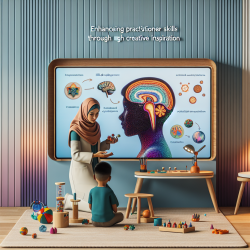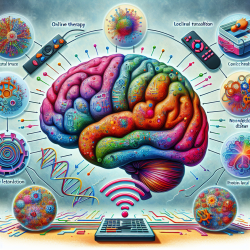Introduction
In the realm of speech-language pathology and child development, understanding the multifaceted influences on psychological well-being is crucial. A recent study titled "Associations of moderate-to-vigorous physical activity with psychological problems and suicidality in Chinese high school students: a cross-sectional study" provides compelling insights into how physical activity (PA) can be a pivotal factor in enhancing mental health outcomes for adolescents. This blog explores the findings and implications of this research, offering practitioners data-driven insights to refine their therapeutic approaches.
Key Findings
The study, involving a nationally representative sample of 13,349 Chinese high school students, explored the associations between moderate-to-vigorous physical activity (MVPA) and various psychological issues, including depression, anxiety, ADHD, and oppositional defiant disorder (ODD). The results highlighted that:
- For boys, high MVPA was associated with a lower risk of depression (OR = 0.68) and anxiety (OR = 0.71).
- Moderate MVPA was linked to a reduced risk of ADHD (OR = 0.73) in boys.
- For girls, both moderate and high MVPA were associated with a lower risk of depression, with high MVPA also reducing ADHD symptoms (OR = 0.58).
- Gender-specific variations suggest that tailored PA interventions could be more effective.
Implications for Practitioners
These findings underscore the importance of incorporating gender-specific and frequency-specific PA interventions in therapeutic practices. Practitioners working with adolescents can consider the following strategies:
- Personalized Activity Plans: Develop individualized PA plans that consider the gender and specific psychological needs of each child.
- Collaborative Approaches: Work with educators and parents to integrate PA into daily routines, emphasizing its role in mental health.
- Monitoring and Feedback: Use data-driven methods to monitor progress and adjust PA interventions accordingly.
Encouraging Further Research
While the study provides a robust foundation, further research is needed to explore the causal relationships and long-term effects of PA on psychological health. Practitioners are encouraged to engage in or support research initiatives that expand on these findings, particularly in diverse cultural and socioeconomic contexts.
Conclusion
The integration of physical activity into therapeutic practices offers a promising avenue for enhancing mental health outcomes in adolescents. By leveraging the insights from this study, practitioners can develop more effective, tailored interventions that address the unique needs of each child.
To read the original research paper, please follow this link: Associations of moderate-to-vigorous physical activity with psychological problems and suicidality in Chinese high school students: a cross-sectional study.










